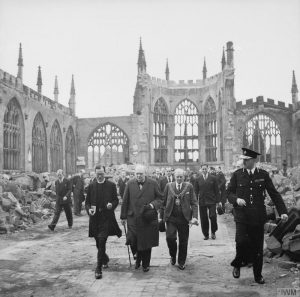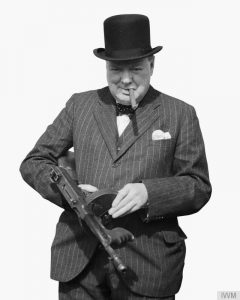
War Leader
Churchill as Leader

Winston Churchill, Parliament Square, London © Sue Lowry & Magellan PR
March 29, 2017
For much of the war, Churchill lived not at 10 Downing Street, the residence of the Prime Minister, but in ‘the Annexe’, a building nearby in Whitehall. Underneath this, were the Cabinet War Rooms (now a museum called the Churchill War Rooms) – a ‘bunker’ – where he and his government were protected from the worst the German bombers could rain down on London.
He spent a lot of his time here in meetings (although he only ever slept in the bedroom on three occasions), and ran it on ‘Winston time’; colleagues were expected to adapt to his way of working, staying up late at night to respond to his demands for updates on the war situation, analyzing reports and taking instructions (often with ‘Action this Day’ labels attached).
I hope you will forgive me if I tell you something that I feel you ought to know … There is a danger of your being generally disliked by your colleagues & subordinates because of your rough sarcastic & overbearing manner … I must confess that I have noticed a deterioration in your manner; & you are not so kind as you used to be … I cannot bear that those who serve the Country & yourself should not love you as well as admire and respect you.
Clementine in a letter to Churchill, 27 June 1940, in Soames, Speaking for Themselves2024 International Churchill Conference
Join us for the 41st International Churchill Conference. London | October 2024More
Always keen to be ‘in on the action’ – and aware that there was an enormous task ahead of Britain if it were to survive this war (and that he had the skills to get the job done) – Churchill concentrated most of his efforts on running the war and left much of the domestic management of the country – the Home Front – to others, a decision that he may have come to regret in 1945.
To read wartime memories from colleagues who worked there with him, click here.
Subscribe
WANT MORE?
Get the Churchill Bulletin delivered to your inbox once a month.





